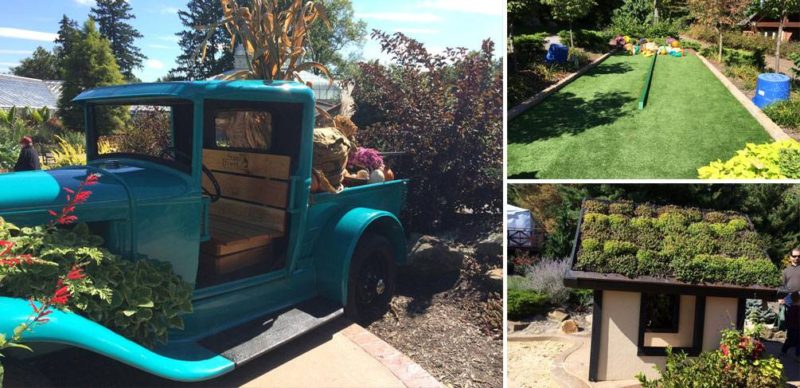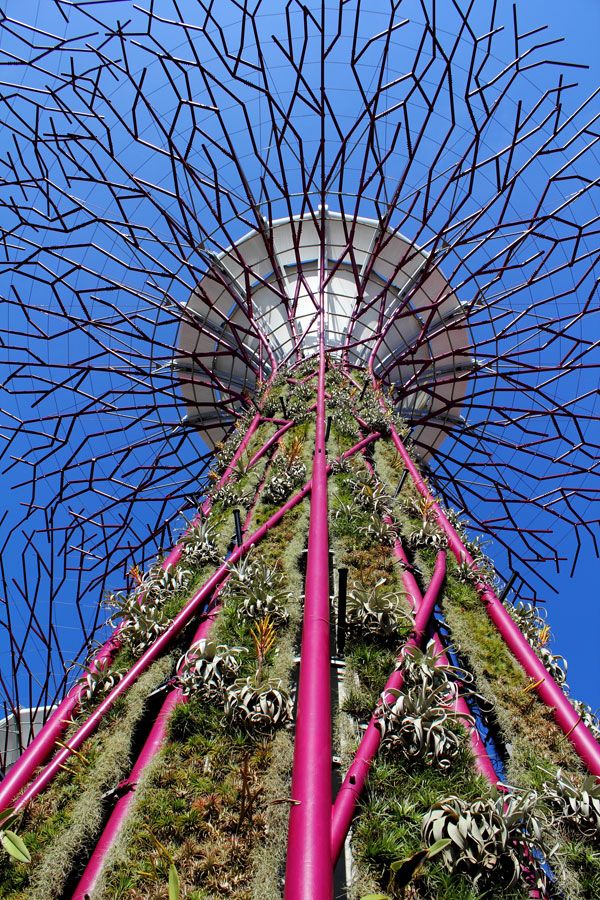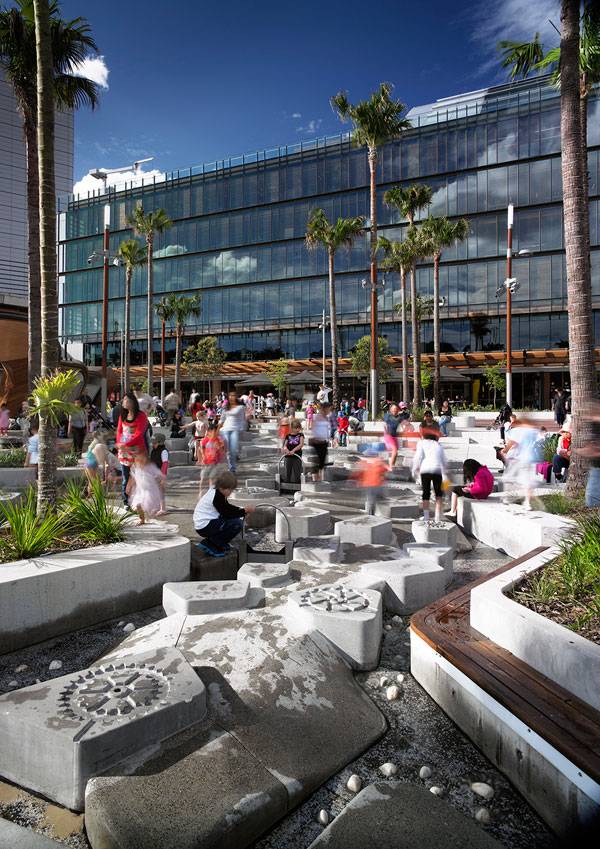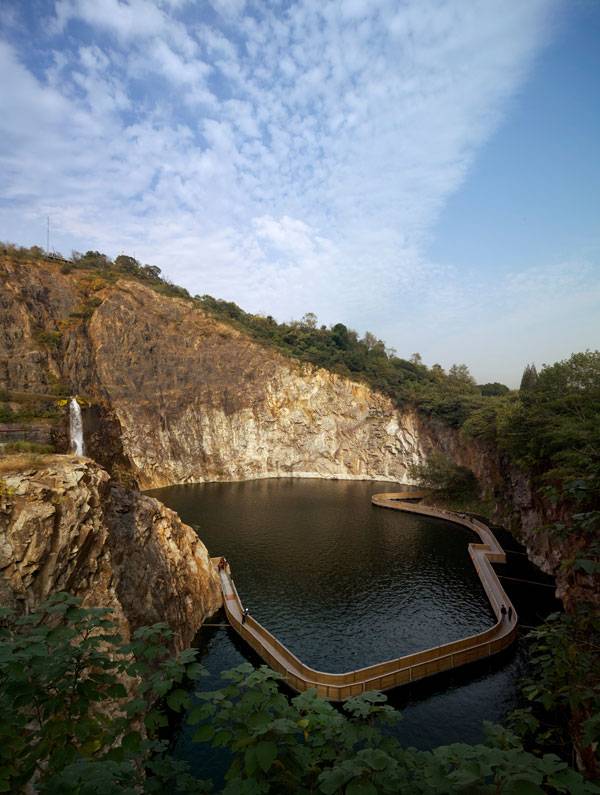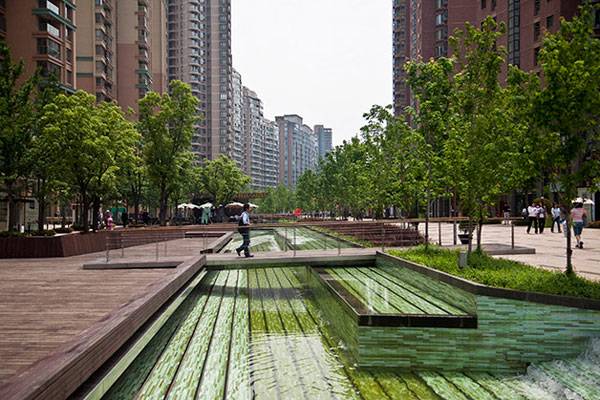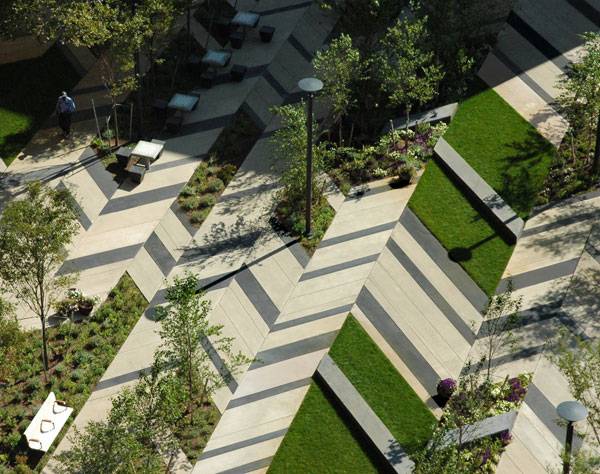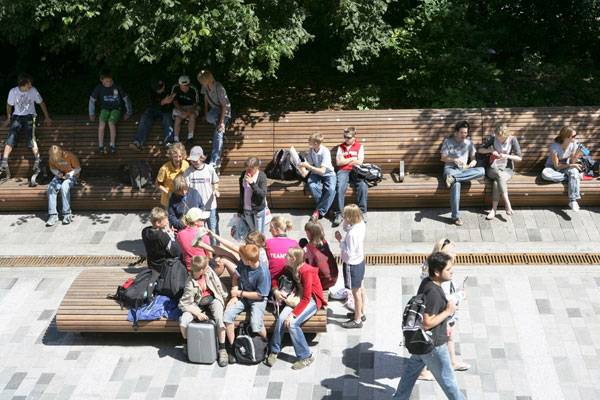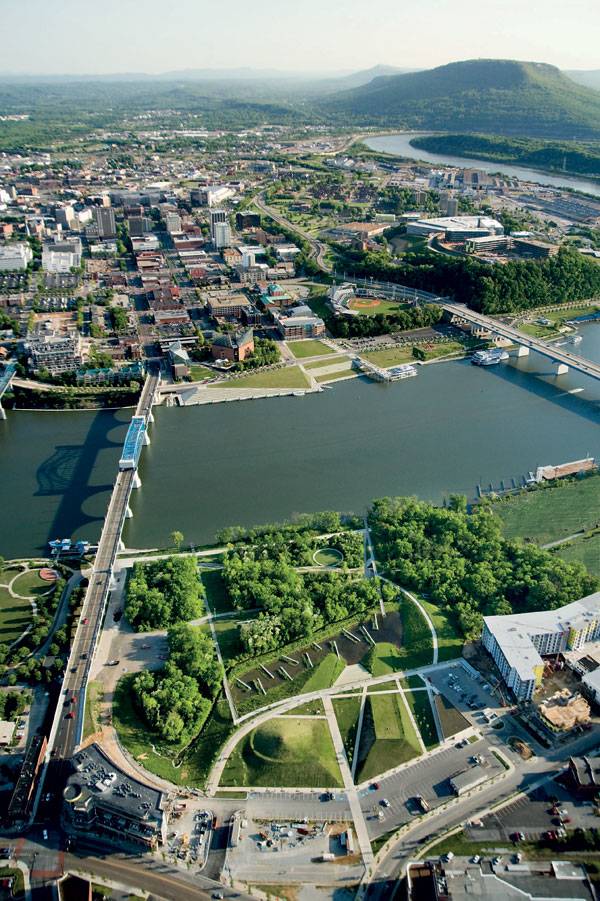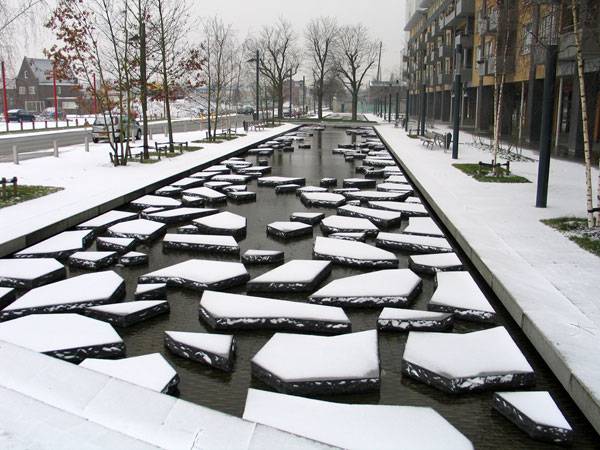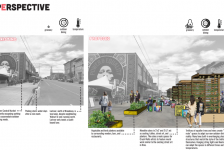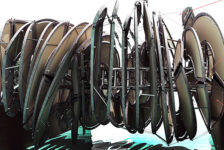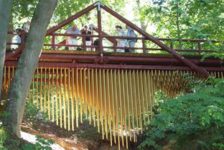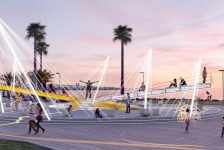Article by Moreira Filho – We collectively look at the past 10 years and highlight 10 inspirational projects that have become icons of landscape architecture. We stepped out and took a look at the last 10 years of projects and separated out the very best and most awesome ones from each year to show you so that you can learn how to be an awesome landscape architect with these inspirational designs. Check them out. Learn more about any of these awesome projects by clicking on any of the images or headlines.
Inspirational Projects From the Last 10 Years
2015 – Know how to Link Work and Free Time with Navy Yard Central in Philadelphia
This project preserves the historical aspects of its surroundings and provides sustainability. Located inside a growing industrial and business part of the city, its design provides the idea of engines working, creating a work-place environment as a result and some places where workers can take a rest.
2014 – Want to Prove how Landscape Architecture can be Really Important for the World? National Arboretum in Canberra, Australia Teaches you how
In addition to being the recipient of 2014 World Architecture Festival’s Landscape of Year Award, it joins a gorgeous design of land with preservation and educational aspects. Sustainability integrated into design is the first factor that made this project a winner. Therefore, if you are looking for inspiration for your next project, surely this is our good tip; native and exotic species were separated into groups and put in the landscape as a big garden. WATCH >>> National Arboretum Canberra: World Landscape of the Year 2014
2013 – Are you Searching for Futuristic Inspiration? Take a Look at South-Marina Bay in Singapore
This project has as its highlight, vertical gardens full of tropical epiphytes, climbers and ferns positioned into 18 “Supertree” towers. They have a futuristic design that impresses the viewer with the sensation that we are on another planet. It takes up 54 hectares where horticultural gardens share space with different kinds of flowers and colored foliage. That’s why it deserved the 2013 Landscape Institute Fellows’ Award for Climate Change Adaptation.
2012 – Kyushu Sandyo University – Links Culture with Contemporary Design
Free walks make for a free creative mind. This project in Kyushu Sandyo Universiti in Japan, designed by DNA – Design Network + Associated – shows us how it is possible. It is divided into three spaces; The first is the Amphitheater, with its crackled and irregular lines reminding the traditional terraced rice fields. The second is a Central Plaza, an oval pergola with cloud-shaped benches and little stools share and mix up the place with shrubs, trees, flowers. In this scenario, you can walk freely because it doesn’t have any rules for walking marked on the ground by the design. Organic and geometric lines pass over the waterway harmonically and accessibly; free as our mind must be. And finally The North Street; a big path guided by camphor trees.
2011 – Learning how to Cause a Huge Unifying Sensation and Connect People with Darling Quarter Project
Created by ASPECT Studios on around 1.5 hectare in Sidney, it takes an innovative direction for this business part of the city, almost like a shopping mall – without roofs. How so? It is surrounded by two 6-star commercial buildings, a huge theater called Lendlease Darling Quarter Theatre, cafes, wine bars, restaurants and a large playground where children can play with water flowing like a small river through concrete stones. Everything was thought to make the connections between the city and people.
2010 – Quarry, Gardens and Landscape Architecture, is it Possible? Sure it is and Quarry Gardens Project Shows us how
Anyplace can be intervened in even though it can be a subtle intervention. This old quarry within Chenshan Botanical Garden in the surroundings of Shanghai was completely transformed with subtlety by THUPDI and Tsinghua University project. It’s about a combination of stones of that place, CorTen steel and a light wooden pathway drawn with minimal intervention over the water in the mirror lake. Sometimes, intervention is totally mixed withoriginal land, bringing a wonderful and unused combination to the landscape. That’s why it got an ASLA Honor Award in 2012.
2009 – Gubei Gold Street Shows that Living Outdoors is Better It is not a simple pedestrian area. It is Gubei Gold Street in Shanghai. All the good conceptions of landscape architecture were combined into this promenade by SWA project. In a very bustling and crowded part of the city, an old street was transformed into a shopping mall for pedestrians, with green spaces distributed in small plazas with colorful and illuminated benches, crossed by some fountains and rectilinear mirror pools and a large space opened for pedestrians – this point attracts people’s attention instantly.2008 – Levinson Plaza – Boston: People Come Back to the Public Realm
Materials and vegetation chosen for lawns, canopy trees, and ground design, were all organized by Mikyoung Kim Design. And all these ancient elements of what used to be traffic and train congestion near Huntington Avenue in Boston were pressed artistically into the ground design. At this point, play areas were created for children, as well as community gathering spaces, recreational spaces, and other areas that provide to citizens a location for activities, such as tai chi practice, for example. Different sizes of trees and shrubs were chosen to minimize sound and visual problems. Pavement is strong and drawn along the diagonal in a graphic pattern.
2007 – Must we Know User’s Wishes Before we Start Designing? New Road, Brighton Project in Brighton, UK Shows that this is the way of Success
Landscape Projects and Gehl Architects worked together to find out all sorts of information about people’s lifestyle, experience and wishes before they started any thought of intervention in New Road, Brighton, UK. Lots of questions were considered before starting, i.e., how would the traffic of vehicles be, and how would the commerce react. So, they created a space where cars can pass slowly and people can walk around freely, with places to have a sit or park a bicycle and that could be lit in the night because of the theaters and restaurants around.
2006 – Renaissance Park, Chattanooga, US – Reborn to Teach that Landscape Architecture is the Best Tool for Recomposition of the Land
In a toxic land something started to change. An industrial area full of toxic residuals in the soil and water, forbidden for people to access, gave space to a public park. Elevated piers were created over wetlands as riparian vegetation was restored to offer opportunities for wildlife contact. Designers took advantage of the deep cavity that emerged from the excavation of contaminated soil. They planned a floodplain storage basin by creating a wetland system that collects wastes and naturally filters part of them before the water reaches the Tennessee River. So, the vegetation and the water does the work of regenerating the soil and air, organized as a big draw in the land by the design of Hargreaves Associates.
2005 – Do you Want to Know what Makes a Successful Street? Roombek, the Brook, in Enschede, the Netherlands, has the answer
The greatest challenge in landscape architecture is to make streets which restore life in urban centers, creating cities for the people. In this project, the river was developed for the citizens in a new design with crackled artificial stones surrounded by trees and paths, and of course, the street. These stones help the places flow in time. It is a strong rectilinear design but sufficient to improve people’s contact with the water and vegetal elements.
Observation is a skill every landscape architect must have. The study and comprehension of these projects allows us to take notice of our own mistakes and inspires us to improve our designs. There are so many huge projects that it is almost impossible to choose only 10. If you didn’t see your favorite project in this article, find the link in our site’s search box and put it in the comments. Tell us: what is your favorite one and why?Recommended Reading:
- Becoming an Urban Planner: A Guide to Careers in Planning and Urban Design by Michael Bayer
- Sustainable Urbanism: Urban Design With Nature by Douglas Farrs
- eBooks by Landscape Architects Network
Article by Moreira Filho
Published in Blog


